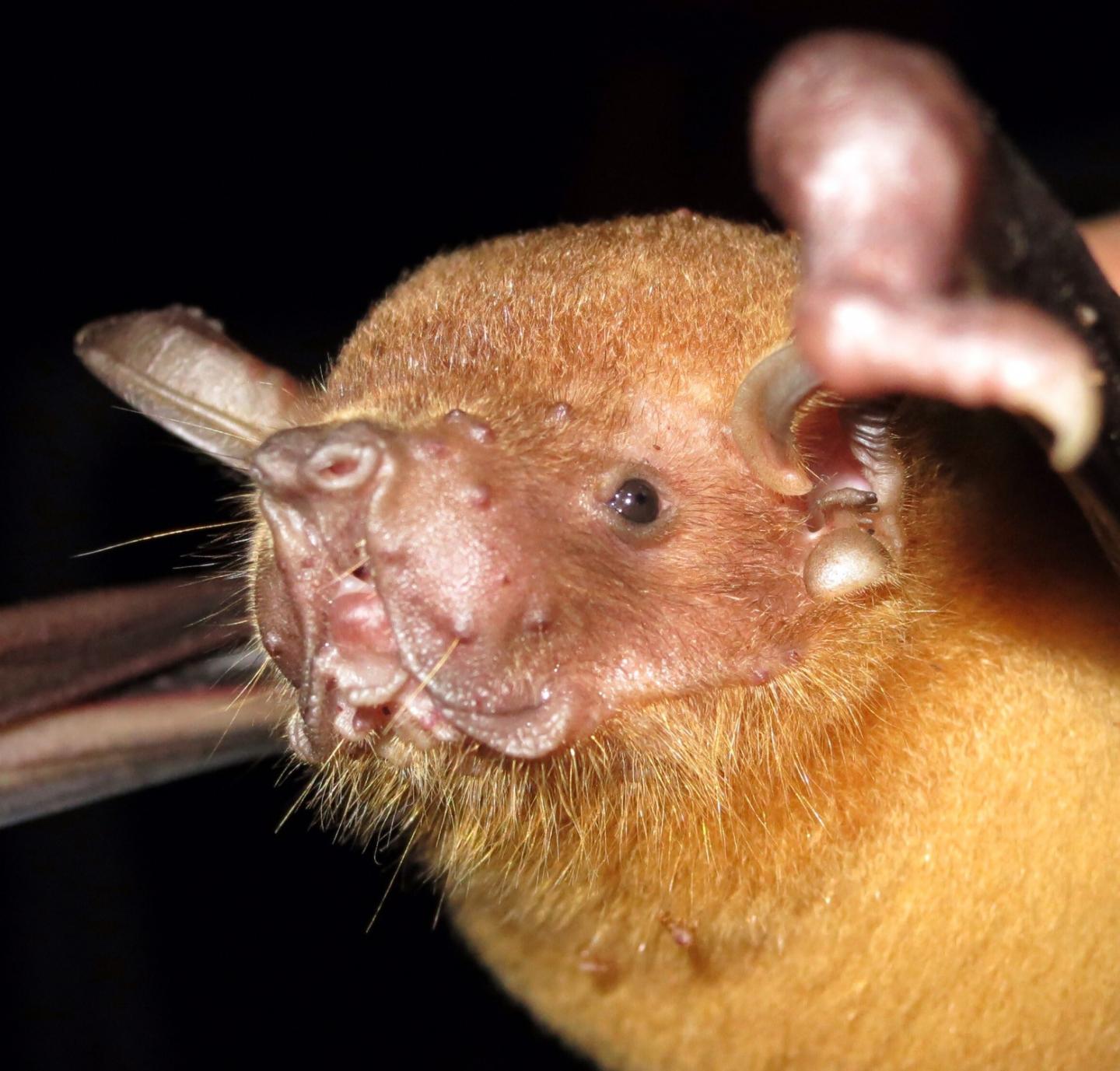
Credit: Jon Flanders
STONY BROOK, NY, June 15, 2020 – Some bat species seem to carry coronaviruses but rarely be affected by them. Scientists are trying to understand why this is the case, and a new study led by Liliana Dávalos, PhD, in the Department of Ecology and Evolution at Stony Brook University will investigate how viruses would affect cells upon entry into the bat host in the nasal passages to explain why symptomatic disease does not occur. The research is funded by the National Science Foundation (NSF) with a one-year grant, effective July 1.
While many similar studies of viruses in bats focus on the host’s immune system, this study centers on goblet cells, which produce mucus in the nasal passages. Goblet cells are present in bat noses, and researchers hypothesize that there must be a difference in how coronaviruses attack these cells in bats versus humans.
“There is much to learn about the cells viruses attack upon entry,” says Dávalos. “Because of the acute respiratory symptoms and the curious loss of the sense of smell in some human patients with COVID-19 there is a hint that cells in the nasal passage are afflicted first.
“We suspect that the receptors coronaviruses use to enter cells are distributed differently in the bats that have, for many generations, faced the challenge of circulating coronaviruses.”
To test their hypothesis and compare the differences between bats and humans and to understand how the lining, or epithelium, is modified in bats compared to humans, the researchers will compare proteins, DNA and histology of bats to humans and mice. The work will highlight the role of goblet cells, which have immune and inflammatory functions, as critical for infection from-versus resistance to viral attack. They will use bat tissue samples from the Dávalos lab, as well as published data sets from human and mice nasal tissues samples.
Findings from the research will also enable health agencies worldwide to better survey bat populations and potentially help to prevent further pandemics similar to COVID-19. For more information about the research and grant, see this NSF webpage.
###
Collaborating investigators include Laurel Yohe, PhD, of Yale University and Angelique Corthals, PhD, of the John Jay College of Criminal Justice.
Media Contact
Greg Filiano
[email protected]
Original Source
https:/





